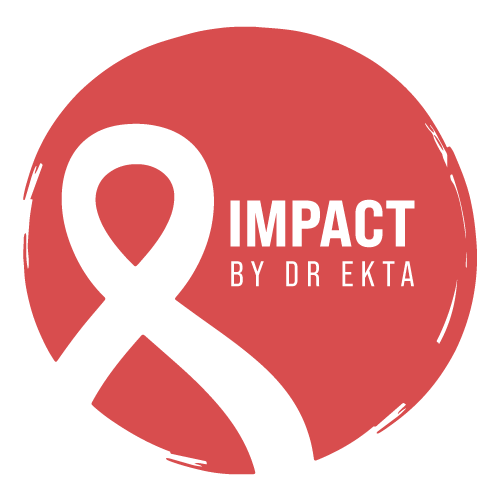Thyroid cancer is a condition where malignant cells form in the tissues of the thyroid gland. Fortunately, when detected early, most types of thyroid cancer have a high survival rate. In this comprehensive guide, we will explore the cure rate, survival statistics, symptoms, diagnosis, and treatment options. We’ll also address common concerns and questions patients often have.
What Is Thyroid Cancer?
Thyroid cancer begins in the thyroid gland located at the base of the neck. It is more common in women than in men and is often diagnosed in younger individuals compared to other cancers. There are different types of thyroid cancer, including papillary, follicular, medullary, and anaplastic, each with its own behavior and prognosis.
Thyroid Cancer Symptoms
Recognizing the early signs of thyroid cancer can help with timely diagnosis and treatment. Here are some common symptoms to watch for:
- A lump or swelling in the neck, particularly on the front side
- Hoarseness or voice changes that persist
- Difficulty swallowing or breathing
- Pain in the neck or throat
- Persistent cough not associated with a cold
While many thyroid nodules are benign, it’s important to consult a doctor if you experience these symptoms. Early detection plays a major role in achieving favorable outcomes.
Thyroid Cancer Cure Rate: An Overview
The term “cure rate” often refers to the percentage of patients who remain cancer-free for a long period following treatment. In the case of thyroid cancer:
- Papillary and follicular thyroid cancers have cure rates exceeding 90% when treated early
- Medullary thyroid cancer has a slightly lower survival rate, especially if it spreads to other parts
- Anaplastic thyroid cancer has a much lower cure rate due to its aggressive nature
The overall 5-year survival rate for all types of thyroid cancer combined is around 98% according to the American Cancer Society.
Survival Statistics Based on Type and Stage
The prognosis of thyroid cancer largely depends on the type and stage at diagnosis.
- Papillary thyroid cancer: 5-year survival rate is over 99% for localized cases
- Follicular thyroid cancer: Survival rates are similarly high, above 95% when caught early
- Medullary thyroid cancer: Around 90% for localized, 75% if spread to nearby tissues
- Anaplastic thyroid cancer: Approximately 10–15% due to its rapid progression
Staging also matters: - Stage I and II: Typically have excellent prognosis
- Stage III and IV: May require more aggressive treatment, and outcomes vary
Diagnosis of Thyroid Cancer
Early and accurate diagnosis is crucial for effective treatment. Common diagnostic steps include:
- Physical exam: Checking for lumps or swelling in the neck
- Ultrasound: Visualizes the thyroid gland and any nodules present
- Fine-needle aspiration (FNA) biopsy: Extracts a sample of cells for testing
- Blood tests: Evaluate thyroid hormone levels and specific tumor markers
- Radioactive iodine scan: Helps determine whether nodules are producing hormones
These methods help determine whether a thyroid nodule is benign or cancerous and guide treatment planning.
Treatment Options for Thyroid Cancer
Thyroid cancer is highly treatable, especially in its early stages. Treatment typically includes one or more of the following:
- Surgery: The most common initial treatment; may involve partial or total thyroidectomy
- Radioactive iodine therapy: Destroys any remaining thyroid tissue or cancer cells post-surgery
- Thyroid hormone therapy: Helps prevent cancer recurrence and maintains normal metabolism
- External beam radiation therapy: Used in rare cases, especially for advanced cancers
- Targeted drug therapy: Especially beneficial for medullary or advanced thyroid cancers
Each patient’s treatment plan is tailored based on the cancer type, stage, and overall health condition
Life After Thyroid Cancer Treatment
Most patients return to normal life after treatment, especially when the cancer is diagnosed early. However, follow-up care is essential. Long-term management may include:
- Routine blood tests to monitor hormone levels and recurrence
- Regular imaging scans
- Lifelong thyroid hormone replacement therapy
- Support for managing fatigue or changes in metabolism
Staying informed and maintaining a healthy lifestyle plays a critical role in recovery and long-term wellness
Can Thyroid Cancer Be Prevented?
There are no guaranteed ways to prevent thyroid cancer, but certain actions may reduce risk:
- Avoid unnecessary exposure to radiation, especially in childhood
- Be aware of family history and seek genetic counseling if necessary
- Maintain a healthy diet and lifestyle to support overall wellness
- Report neck lumps or voice changes to your oncologist promptly
While some genetic forms of thyroid cancer, like medullary cancer, can be detected early through testing, most cases are sporadic and not linked to heredity
FAQs About Thyroid Cancer
Q1: Is thyroid cancer completely curable?
In many cases, yes. Especially for papillary and follicular types, if detected early and treated promptly, the cure rate is extremely high.
Q2: How long do you have to take medication after thyroid cancer treatment?
Patients who undergo total thyroidectomy typically need lifelong thyroid hormone replacement.
Q3: Does thyroid cancer spread quickly?
Most thyroid cancers, such as papillary and follicular types, grow slowly. Anaplastic thyroid cancer, however, is very aggressive and spreads quickly.
Q4: Can thyroid cancer return after treatment?
Yes, but with regular follow-up and early detection, recurrences can be managed effectively.
Q5: Is radioactive iodine safe for treating thyroid cancer?
Yes, it’s a well-established treatment with minimal long-term side effects, especially when administered under proper medical supervision.
Trusted References
Final Thoughts
The outlook for thyroid cancer patients is very promising. With early diagnosis, appropriate treatment, and diligent follow-up, the chances of full recovery are excellent for most people. Understanding the symptoms, treatment options, and follow-up requirements can help patients and families feel more in control of their health journey. If you notice a persistent lump in your neck or changes in your voice, consult your doctor. Awareness and timely action can make all the difference.

